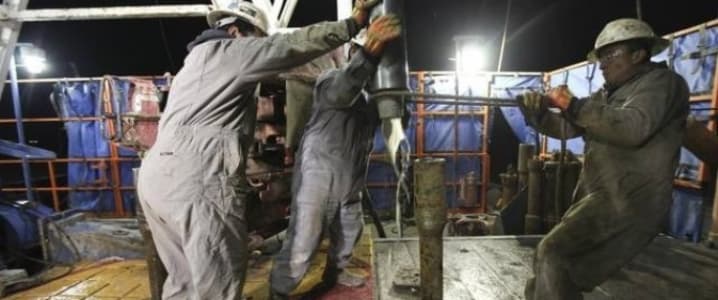Small but potentially critical item for the U.S. shale patch this week. With one state at the core of unconventional oil and gas production moving to shut down a swath of wells after some unexpected side effects.
The place is Oklahoma. And the problem is — the ground is moving.
On September 3, Oklahoma was struck by its largest earthquakes in memory. With the tremor initially being classified as a 5.6 — which was upgraded Wednesday to a 5.8 by the U.S. Geological Survey. Making it the biggest quake ever recorded in the state.
And regulators in Oklahoma have an idea what’s causing the unusual seismic activity.
Shale oil and gas production.
In the wake of the earthquake, the Oklahoma Corporation Commission immediately moved to shut down oil and gas activity it believes may be responsible for the shaking. With the regulatory body ordering E&Ps to suspend pumping at 37 wastewater disposal wells in the state.
That stoppage represents the first time that Oklahoma has issued a mandatory halt to oil and gas activity due to earthquake concerns. But the numbers show that the problem is growing — with the state having seen 375 earthquakes for the year to June 22, after experiencing a total of 890 quakes in 2015.
Here’s the shocking thing (pun intended). During 2008, prior to shale activity really getting going in Oklahoma, the state experienced just two earthquakes for the entire year. A statistic that’s led regulators to conclude that oil and gas activities such as wastewater disposal are very likely the culprit behind all the recent shaking.
That could be a major issue shaping up for drillers in hot plays here like the Scoop and Stack. Watch for more data on quakes throughout Oklahoma and the surrounding area, and for any further stoppages ordered by the government — which could impact production and profits for local E&Ps.
Here’s to not rocking the boat.
By Dave Forest
More Top Reads From Oilprice.com:
- Oil Markets Brace As U.S. Looks To Sell 100 Million Barrels From SPR
- Most Oil Industry Experts See Oil Below $60 Through 2017
- How The Hanjin Bankruptcy Could Impact Oil Prices



















As a geologist you know better. Even VICE news is more even handed on this topic. The cause of the earthquakes is the Arbuckle formation and the fault lines associated with this deep geologic formation that geologists, like you, have known for most of the past century can be seismically active.
Drilling for oil and gas is not the problem, whether conventional vertical or horizontal drilling in which horizontal uses the techiques of fracturing and high pressure water pumping.
Today, the vast majority of pumped water is reused. However, many older wells and newer wells produce as much as 10 gallons of water for every 1 gallon of oil. This salty water or Brine was already in the earth and not pumped down in the initial drilling, as you know. Many chemical compaies drill wells specifically to access the salt water for their caustic chemicals, etc.
The cause of the Earthquakes intuitively and as reported by Stanford scientists is the re injection of this produced Brine back into the earth via separate wells in Oklahoma, especially wells that tap the Arbuckle.
Many of the older geologic drilling targets in Oklahoma, such as the Mississippian Lime, North and East of the STACK and SCOOP, produce enormous amounts of Brine with the oil production as compared to the STACK which produces very little BRINE.
Oaklahoma's problem is that many of these older wells, whether producing oil and water in the Mississippian or injecting Brine water in Pawnee county for example, where the 6.0 Quake hit, are privately owned and operated and in the absense of hard scientific proof that says X well caused Y Quake it is difficult to trample property ownership in our country.
Also, I believe that no person has been killed by these thousands of Quakes, while, for example, people are killed by autos every day in Oaklahoma...yet car driving continues.
Therefore, given the percentage of GDP, both direct and associated, that the oil and gas industry produces in Oaklahoma, it is not very helpful to write misleadingly about the problem. Even as a non geologist, it is clear that oil formations that produce little water, such as the STACK, should be promoted and that formations in the north and east of Kingfisher county that produce alot of water need to be slowed or find an alternative for Brine disposal.
In the end however, even this will likely have more of a negative impact ( in terms of families with less food on the table ) than what has been felt to date in Oklahoma due to seismic activity. Enjoy your ride to work.